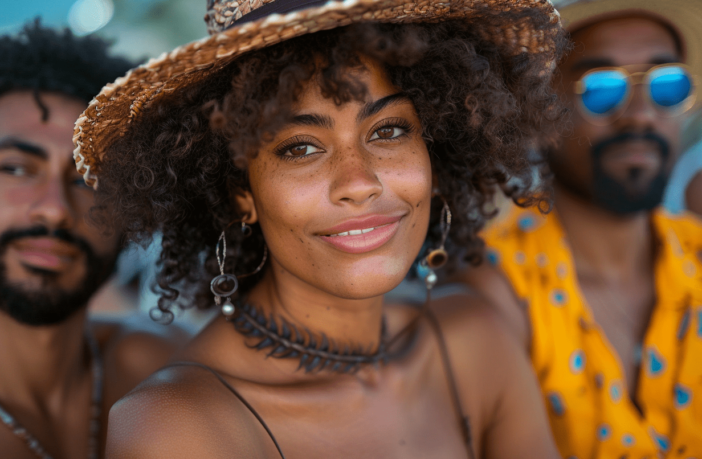Afro-Mexicans, a significant yet often overlooked group within Mexico’s diverse population, have a rich, complex history rooted in the transatlantic slave trade. As part of celebrating National Latine Heritage Month, let’s examine the important role this ethnic group plays in shaping Mexico’s cultural landscape while actively seeking recognition and equality within that society.
Historical roots
The story of Afro-Mexicans begins in the 16th century, during the height of the transatlantic slave trade. When Spanish colonizers arrived in Mexico, they imported enslaved Africans to replace the declining Indigenous labor force in mines, sugar plantations and other sectors. These Africans — along with Indigenous peoples and Europeans — shaped the multicultural foundation of colonial Mexico. Estimates suggest that as many as 200,000 Africans were brought to Mexico during this period.
One of the earliest and most notable African figures in Mexican history is Yanga, an enslaved African who led a successful rebellion against the Spanish in the early 1600s, according to TIME. His leadership established one of the first free African settlements in the Americas, San Lorenzo de los Negros, which was later renamed Yanga in 1932 in his honor.
As the African population grew, they intermarried with Indigenous peoples and Europeans, creating a unique cultural blend that contributed to Mexico’s mestizo identity. However, the African influence was largely erased or overshadowed by the focus on mestizaje, which emphasized the blending of Indigenous and European cultures while minimizing the African contribution.
Afro-Mexican communities
The descendants of these Africans, often concentrated in regions like the states of Guerrero, Oaxaca and Veracruz, developed distinct cultural identities over the centuries. Afro-Mexican communities retained elements of African traditions in music, dance, cuisine and religious practices, blending them with Indigenous and European customs.
In the Costa Chica region of Guerrero and Oaxaca, Afro-Mexicans have maintained a visible presence. Many communities practice traditional dances like the “danza de los diablos” (Dance of the Devils), which has roots in African traditions, according to Travel Noire. The state of Veracruz, with its port that once served as a major entry point for enslaved Africans, is another area where Afro-Mexican culture has deep historical roots, particularly in its musical styles like son jarocho and fandango, which incorporate African rhythms.
Erasure and marginalization
For centuries, Afro-Mexicans were largely invisible in the national narrative, both politically and socially. The concept of mestizaje, or racial mixing, became central to Mexican identity after the revolution in 1910, overshadowing Afro-Mexicans’ contributions. This narrative focused on the blending of Indigenous and European cultures, largely excluding African ancestry from the picture.
Afro-Mexicans faced discrimination and marginalization, often being confined to rural areas and denied equal access to education, health care and political representation. Their contributions to Mexico’s history were downplayed, and they were frequently left out of census counts, contributing to their erasure in official records.
Modern recognition and progress
It wasn’t until the early 21st century that Afro-Mexicans began to gain more visibility. In 2015, the Mexican government officially recognized Afro-Mexicans as a distinct ethnic group in a national survey for the first time. According to the 2020 Mexican Census, approximately 2.6 million people — about 2 percent of the population — identified as Afro-Mexican or of African descent, reported The Wilson Center.
This recognition marked a significant step toward inclusion, but Afro-Mexican communities continue to face challenges. Economic disparities, limited access to health care and underrepresentation in politics are ongoing issues. Many Afro-Mexican communities are located in remote, rural areas where infrastructure is underdeveloped, further exacerbating social and economic inequalities.
Despite these challenges, there is a growing movement within Afro-Mexican communities to assert their rights and reclaim their heritage. Cultural festivals celebrating Afro-Mexican identity, such as Costa Chica’s Afro-Mexicano Festival, have gained popularity, helping to bring greater visibility to their unique traditions and histories. Activists are also advocating for educational reforms to include Afro-Mexican history in school curricula, ensuring that future generations understand the full scope of Mexico‘s multicultural history.
Afro-Mexicans and politics
Afro-Mexicans have also made strides in political representation. In 2019, Mexico amended its constitution to include recognition of Afro-Mexicans as an official ethnic group, opening the door for greater legal protections and access to resources. Additionally, some Afro-Mexican leaders have taken up political office, pushing for more inclusive policies.
Afro-Mexican contributions to culture
Afro-Mexicans have contributed significantly to Mexican culture, particularly in music, dance and food. The Veracruz Carnival, with its Afro-Caribbean influences, is one of Mexico’s most vibrant festivals. Musically, genres like son jarocho have become integral to Mexican musical identity. Afro-Mexican cuisine, rich with African, Indigenous and Spanish influences, also offers a window into the cultural fusion that has shaped the region.
The road ahead
While progress has been made, the Afro-Mexican community continues to face significant obstacles. Economic disparities and social exclusion remain prevalent, and many Afro-Mexicans feel that their contributions to Mexican society are still underappreciated. However, the growing recognition of their identity and cultural importance suggests that change is on the horizon.



